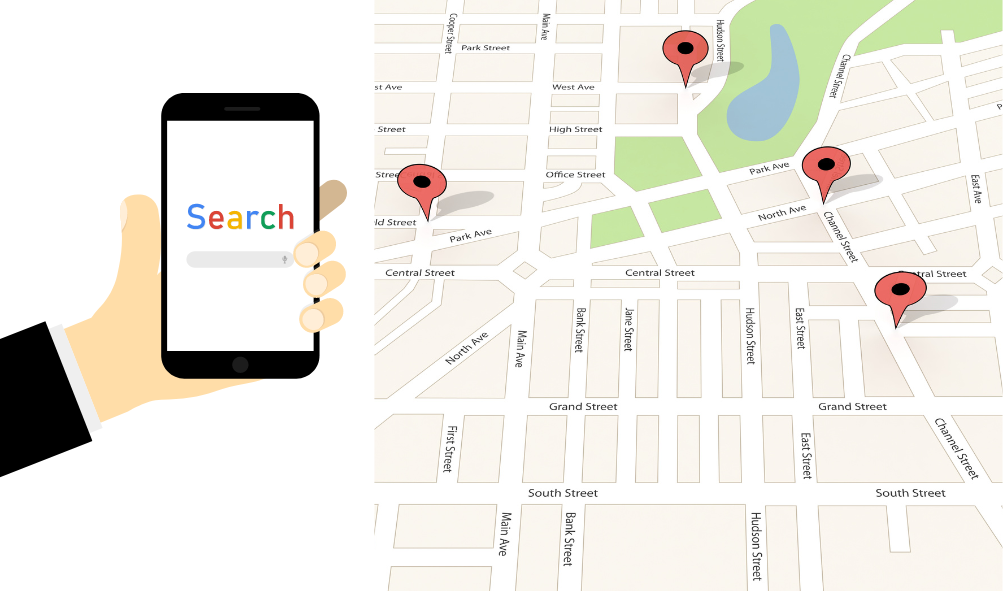Hey there, are you looking to boost your business and reach more customers online? Of course, you are. The digital world offers so many opportunities if you know how to make the most of them. The key is having solid digital marketing strategies to help you connect with your audience and drive real results.
In this article, we’re going to break down the 5 most effective digital marketing strategies that every business needs to be using. Some of these you may already be familiar with, but others could be game-changers for your company. Each strategy is practical, proven, and ready to implement right away.
Whether you’re just getting started with digital marketing or you’re looking to enhance your existing efforts, these 5 strategies will help you increase traffic, generate more leads, build your brand, and ultimately boost your conversion. Let’s dive in and take your digital marketing to the next level!
Search Engine Optimization
To get found online, you need search engine optimization or SEO. It helps search engines like Google find and rank your website higher in the search results. The higher your ranking, the more people will click and the faster your business will grow.
Keywords
Choose keywords that your target customers actually search for. Do research to find the most popular and relevant keywords for your industry and location. Use these keywords in your page titles, content, image names, meta descriptions, and alt text.
High-Quality Content
Create content centered around your target keywords. Aim for 1,000-2,000 words per post to rank well. Use your keywords in the content in a natural way, not just stuffed in there. Update your blog weekly or monthly to keep search engines coming back.
Technical SEO
Make sure your website’s technical elements are optimized. This includes having a mobile-friendly responsive design, fast loading times, secure HTTPS URLs, and an XML sitemap to help search engines index all your pages.
Build Quality Backlinks
Earn high-quality backlinks from other authoritative industry websites. Guest blog, get interviewed, submit infographics to content aggregators, and promote your content on social media. Backlinks pass “link juice” and credibility, which helps with search rankings.
Local SEO
If you have a local business, focus on local SEO (Search Engine Optimization) to rank higher in local search results. Optimize your Google My Business listing, get reviews from customers, create location pages on your site, use your city and state name in page titles and content, and get citations and backlinks from local organizations.
SEO does take time, but by following these key strategies you’ll be well on your way to dominating the search engines and growing your digital presence. The rewards of higher traffic and more customers will make all your efforts worthwhile.
Pay-Per-Click Advertising
Pay-per-click advertising, or PPC, is one of the quickest ways to drive targeted traffic to your website. With PPC, you pay only when someone clicks your ad. The major players are Google Ads and Facebook Ads.
Google Ads
Google Ads lets you show text ads at the top of the search results page. You choose keywords related to your business and set a budget for how much you’re willing to pay per click. The higher your bid and the more relevant your ad, the higher it will appear on the page.
To get started with Google Ads:
- Choose a campaign type: Search Network, Display Network, or Shopping. Search Network shows ads on Google Search. Display Network shows ads on other sites and apps. Shopping promotes your products on Google.
- Select keywords and set your budgets. Bid on keywords that potential customers would search for. Set daily and monthly budgets to control costs.
- Create eye-catching text ads. Include a headline, descriptions, and a display URL. Make them compelling!
- Optimize and adjust. See which keywords and ads perform best, then adjust bids and budgets accordingly. Measure results with analytics and conversion tracking.
Facebook Ads
Facebook Ads lets you show image ads and video ads to Facebook users. You can target ads based on location, demographics, interests, behaviors, and more.
To start with Facebook Ads:
- Choose your ad objective: brand awareness, traffic, conversions, etc. The objective determines how your ads are optimized.
- Define your audience. Select age, location, interests, behaviors, and other targeting options. The more specific the audience, the better.
- Design your ad creative. Upload eye-catching images or videos that will resonate with your audience. Include a clear call to action.
- Set a budget and schedule. Decide how much you want to spend each day and for how long the ads will run. $5 to $20 per day is a good start.
- Analyze and optimize. See how your ads perform and make changes to improve results. A/B tests different versions of your ads and targets for the best ROI.
With regular optimization of keywords, audiences, ads, and budgets, PPC can drive a steady stream of qualified leads and customers to your business. The key is to start small, test, analyze, and scale what works!
Social Media Marketing
Social media marketing refers to the use of social media platforms like Facebook, Instagram, and Twitter to promote your business and engage with your target audience. It’s one of the most effective digital marketing strategies today.
Build your presence
The first step is to establish profiles on major social networks. Optimize your profiles with an eye-catching profile picture, cover photo, and bio highlighting what you do. Post regularly to keep your audience engaged. Consistency is key.
Engage your audience
Don’t just broadcast sales pitches. Share helpful content, behind-the-scenes photos and videos, fun facts, polls, and more. Engage with your followers by replying to their comments and messages. Ask questions to spark discussion. Tag influencers or industry leaders to join the conversation.
Run promotions and contests
Social media is a great place to run giveaways, sweepstakes, coupons, and contests. Offer exclusive discounts and promotions to your followers. This boosts engagement and goodwill.
Advertise on social media
Most major platforms offer paid advertising options like promoted posts, stories, and reels to boost reach and traffic. Target your ads to your ideal audience based on location, interests, behavior, and more. Start with a small budget and scale up as you see results.
Analyze and optimize
Use built-in analytics tools to see what’s performing well and make changes to underperforming content or ad campaigns. Look for trends in your audience’s interests and behaviors. Post at optimal times based on when your followers are most active. Make improvements to get the biggest return on your social media marketing efforts.
With an active social media presence and the right promotion strategy tailored to your business goals, social media marketing can be an invaluable way to raise brand awareness, engage your customers, and drive sales. But remember, social media changes fast, so keep learning and optimizing to stay ahead of trends.
Content Marketing
Content marketing involves creating and distributing valuable, relevant content to attract and retain customers. It establishes your brand as an authority in your industry. The key is to post engaging content on a consistent basis.
Blog posts
A blog is a must-have for any content marketing strategy. Aim for 2-3 posts per week, around 500 to 700 words. Focus on topics your target audience cares about, like industry news, tips, insights, and how-to guides. Share the latest techniques, tools, and advice to establish your expertise. Promote your blog posts on social media to increase traffic.
Videos
Video is an extremely effective way to share content. Create short explainer videos, product demos, behind-the-scenes footage, or interview industry experts. Post videos on your website and channel, then promote them on social media platforms like YouTube, Facebook, Instagram, and LinkedIn. Viewers tend to engage more with visual content.
Infographics
Infographics are visual representations of data, stats, or knowledge. They are eye-catching and make information easy to understand. Find statistics, facts, or surveys related to your industry and turn them into a shareable infographic. Post them on your website, social media, and content platforms like Medium. Infographics are highly shareable, which can significantly increase your reach.
Case studies
Case studies demonstrate how your product or service solved a customer’s problem. Interview clients about the challenges they faced, solutions provided, and results achieved. Share their stories on your website and social media. Case studies build trust and help potential customers understand the value you provide.
Newsletters
Email newsletters keep your subscribers up-to-date with your latest blog posts, videos, promotions, and company news. Aim for a monthly or weekly newsletter. Keep them brief, around 5 to 10 items, with snippets for each article or video and links to read more on your website. Newsletters are a direct line of communication to your customers.
Content marketing requires consistency and patience, but by providing valuable and relevant content to your target audience on a regular basis, you can establish your brand as an industry leader and authority. Focus on a mix of content types like blog posts, videos, infographics, case studies, and newsletters. With time, you’ll gain more traffic, leads, and loyal customers.
Email Marketing
Email marketing is one of the most effective digital marketing strategies. It allows you to reach your audience directly in their inbox. When done right, email marketing has an excellent return on investment. Here are some tips to make the most of your email marketing campaigns:
Build your email list
The first step is gathering email addresses from your website visitors and social media followers. Offer an incentive like a coupon or free ebook in exchange for their email. Make it easy for people to subscribe to your website and social media profiles. Your email list is one of your most valuable assets, so grow it consistently over time.
Design professional emails
Your emails represent your brand, so make sure they look polished and professional. Include your logo, an eye-catching subject line, a clear call-to-action, and an uncluttered layout. Test different email designs to see which ones get the best open and click rates. Keep your content concise, scannable, and solution-focused.
Send regular newsletters
Send a weekly or monthly newsletter to stay in regular contact with your subscribers. Share blog posts, promotions, industry news, and company updates. Keep the content balanced by including things that are both promotional and educational or entertaining. Track open and click rates to see what content resonates most with your audience.
Run strategic campaigns
Use your email list to run strategic campaigns like flash sales, product launches, webinars, and events. Time your campaigns around holidays and events for the best results. For example, run a back-to-school campaign in August or a New Year’s resolution campaign in January. Use email to keep people engaged with your brand all year long.
Measure and optimize
Use email metrics like open rates, click rate bounces, and unsubscribes to see how your campaigns are performing. Make changes to improve your results over time. Consider A/B testing different email elements like subject lines, content, images, and call-to-action buttons to determine the most effective combinations. With regular testing and optimization, you’ll achieve the best results from your email marketing.
Conclusion
So there you have it, the top 5 digital marketing strategies that will help propel your business forward. Now it’s up to you to implement them and see the results. Don’t feel overwhelmed – start with just one or two strategies at a time. Pick the ones that excite you the most or that you think will resonate most with your target audience. With consistency and persistence, these strategies can help transform your online presence and boost your bottom line. What are you waiting for? Pick a strategy and get started today. The digital world is your oyster – now go out and make the most of it!
Looking for a reliable digital marketing agency to help you create and optimize your online marketing efforts? Pop Creative is one of the most trusted digital marketing agencies in South Florida that drives results. Call 786-477-6760 or request a FREE quote today.













Recent Comments